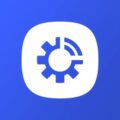Managing a building — an office, hospital, university, hotel, or factory — involves countless responsibilities. There’s a need to track available spaces, maintain equipment, and ensure operations run smoothly.
Without a structured system, these responsibilities could become overwhelming. This is where computer-aided facility management (CAFM) comes in.
What is CAFM software?
Computer-aided facility management (CAFM) software helps businesses manage their facilities, assets, and spaces.
One key aspect of facilities management software is its ability to provide real-time data; CAFM automates human procedures, saves costs, improves space usage and regulatory compliance, and helps make decisions. Simply put, it’s a digital assistant that enables you to manage everything related to your facilities.
Key functionalities and benefits of computer-aided facilities management
Space management
Effective space management is at the heart of any CAFM solution. It enables facilities managers to maximise available space, plan layouts, and allocate resources. For example, the software lets you see occupancy rates, desk usage, and room bookings. You can then repurpose the room to suit your needs.
Did you know? Effective space management can lead to cost savings of up to 30% on real estate, often the second-highest expense for businesses.
A case study highlighted in a space management best practices collection shows that IBM achieved a 20% reduction in real estate costs by leveraging CAFM tools. (Source: WorkX)
Asset management
Assets include everything from HVAC systems to office furniture and lifts. The system creates a central database for all assets, assigning each a unique identifier.
With computer-aided facility management software, it’s easy to track and monitor asset conditions. Maintenance professionals can even account for every piece of equipment with its details.
🔎 Looking for the best solution to manage your assets? Check out the 10 best asset management software.
Scheduling and tracking
Missing maintenance deadlines can lead to costly repairs and downtime. However, CAFM software prevents this by offering scheduling and tracking features. You can set automated reminders for inspections, repairs, and routine maintenance, so that your equipment can run smoothly and stay in good shape.
Lease management
Lease management can be demanding for organisations with multiple properties. CAFM systems, like Infraspeak, have unique features that make this process easier. It tracks leasing agreements, monitors expiry dates, and guarantees compliance.
👨💻See also: 10 best property maintenance software
Integrated reporting and analytics
Compared to paperwork, CAFM systems provide real-time reports and analytics in a clear, easy-to-read format. It gathers data from different sources and turns it into simple reports.
For instance, a manager overseeing multiple buildings must track energy use, maintenance costs, and equipment performance. Instead of collecting data from notepads, the CAFM system automatically pulls real-time information from meters, logs, and tracking systems.
Differences between CAFM, CMMS, and IWMS
While CAFM is key for facilities management, it often gets confused with CMMS (Computerised Maintenance Management System) and IWMS (Integrated Workplace Management System).
Here’s how they differ:
CAFM (Computer-Aided Facility Management) | CMMS (Computerised Maintenance Management System) | IWMS (Integrated Workplace Management System) | |
Scope | Focuses on space management, asset management and operations | Deals with maintenance operations and asset management. | Covers a broad range of facility and real estate management functions. |
Objectives | — Optimise space utilisation — Track assets — Enhance operational performance — Compliance and safety management — Facility planning and forecasting | — Streamline maintenance processes — Reduce downtime — Extend asset lifespan — Labour and resource management | Integrate and simplify all aspects of workplace and real estate management. |
Core features | — Space planning and optimisation — Asset tracking — Maintenance scheduling — Work order management — Inventory tracking — Reporting and analytics | — Preventive maintenance scheduling — Work order management — Inventory tracking — Reporting and analytics | — Lease and property management — Space optimisation — Sustainability tracking — Capital project management — Integrates various functions into a single platform |
Industry-specific applications | — Corporate offices — Healthcare facilities — Educational institutions — Retail spaces | — Manufacturing — Healthcare — Utilities — Transportation — Hospitality | — Large enterprises — Real estate firms — Government facilities — Multi-site organisations |
CAFM is a great choice if your priority is space and asset optimisation. Meanwhile, CMMS is your go-to if you’re more concerned about maintenance and equipment. However, if you want a complete solution that includes lease management and property tracking, IWMS is the best fit!
Having known the differences between computer-aided facility management (CAFM), computerised maintenance management system (CMMS), and integrated workplace management system (IWMS), choosing the right one depends on your organisation’s needs.
Key challenges in facilities management
Think about the biggest challenges you face in facility management — chances are, you’ve dealt with at least one of these issues before. Frustrating? Definitely. Impossible to solve? Not all.
Let’s look at some common challenges and how they affect day-to-day operations.
Inefficiencies from fragmented systems
There’ll be a messy workflow when different tools don’t work together. Imagine you manage a large shopping mall or office. You use one tool for maintenance, another to track repairs, and another for budgeting. But these systems don’t sync.
Likewise, if an escalator breaks down, the maintenance team will log it, but the finance team won’t see the request immediately. This delay keeps the lifts out of service for an extended period. It could even escalate to something worse.
Compliance and regulatory hurdles
Keeping up with statutory compliance is tough. Rules about safety, the environment, and legal requirements constantly change. If a facilities manager misses these changes, it could result in fines, legal issues, or safety risks for employees and customers.
For instance, failing to meet fire safety regulations could endanger people’s lives.
Data silos and lack of visibility
When a facility’s data spreads across different departments, getting a clear view of everything will be challenging. Everything will be lost in spreadsheets, emails, or outdated software, making it hard to make the right decisions.
Administrators struggle to track assets or plan for the future without real-time updates. This lack of visibility makes it difficult to manage the facility well.
📝Read more on the 10 facilities management trends and challenges in 2025
How CAFM solves these issues
While the above challenges may seem overwhelming, the good news is that you can tackle them using computer-aided facility management software. Here’s how:
Automation and real-time visibility
The CAFM solution eliminates manual processes by automating them, such as:
- Work order tracking – It ensures that maintenance requests are logged, assigned, and completed.
- Predictive maintenance – It uses IoT sensors and analytics to prevent equipment failures before they happen. In fact, according to a report by the U.S. Department of Energy, predictive maintenance can reduce maintenance costs by 25-30% and eliminate 70-75% of breakdowns.
- Energy monitoring – It tracks utility usage to reduce energy waste and optimise costs.
Centralised collaboration and communication
A CAFM system provides a single source of truth. Thus, it eliminates the need for multiple software tools and enables teams to:
- Collaborate across departments
- Access real-time data using their mobile devices
When a business uses CAFM software, maintenance staff will access data via mobile devices, register completed activities, and report problems directly from specified checkpoints inside a single system. This simplified procedure allows staff to identify and resolve issues.
Integrations for a unified system
Modern computer-aided facility management solutions integrate with business tools, too. These include:
- ERP (Enterprise Resource Planning) systems for financial management.
- HR software for space allocation and workforce tracking.
- IoT (Internet of Things) devices for automated monitoring and reporting.
It connects to financial systems and syncs with IoT devices — no more data silos. Everything will be in one place.
Why choose Infraspeak?
Infraspeak is a collaborative solution that helps your team Work as One. The platform keeps you connected with features like automation, real-time insights, and seamless communication. Its user-friendly interface allows easy access to training guides so you can troubleshoot and handle tasks independently. Likewise, facilities managers can track maintenance history and KPIs to boost efficiency.
Looking for a better way to maintain your facilities? Our software makes it easier! Request a free demo today.
FAQs about CAFM
What is a computer-aided facility management CAFM system?
Computer Aided Facility Management (CAFM) is a platform designed to help organisations manage and automate facilities, workplace maintenance, asset, and space management. It enhances operational efficiency by providing real-time insights and simplifying facility-related processes.
Which is the best CAFM software?
There are many good CAFM software options available, but some of the top choices include:
- Infraspeak
- Valuekeep
- POC System
- Facile
- eMaint CMMS
- MaintainX
- DaySmart Recreation
Who uses CAFM?
Users of computer-aided facility management software are facilities managers, maintenance teams, asset managers, and health care administrators. Many industries, including corporate offices, manufacturing, education, and hospitality, rely on computer-aided facility management software.
What is the job of a CAFM administrator?
A CAFM administrator configures, manages, and supports facility management operations within a Computer-Aided Facility Management system. Their duties include system updates, data management, user support, troubleshooting, and generating reports to help organisations maximise space usage and improve operational efficiency.


